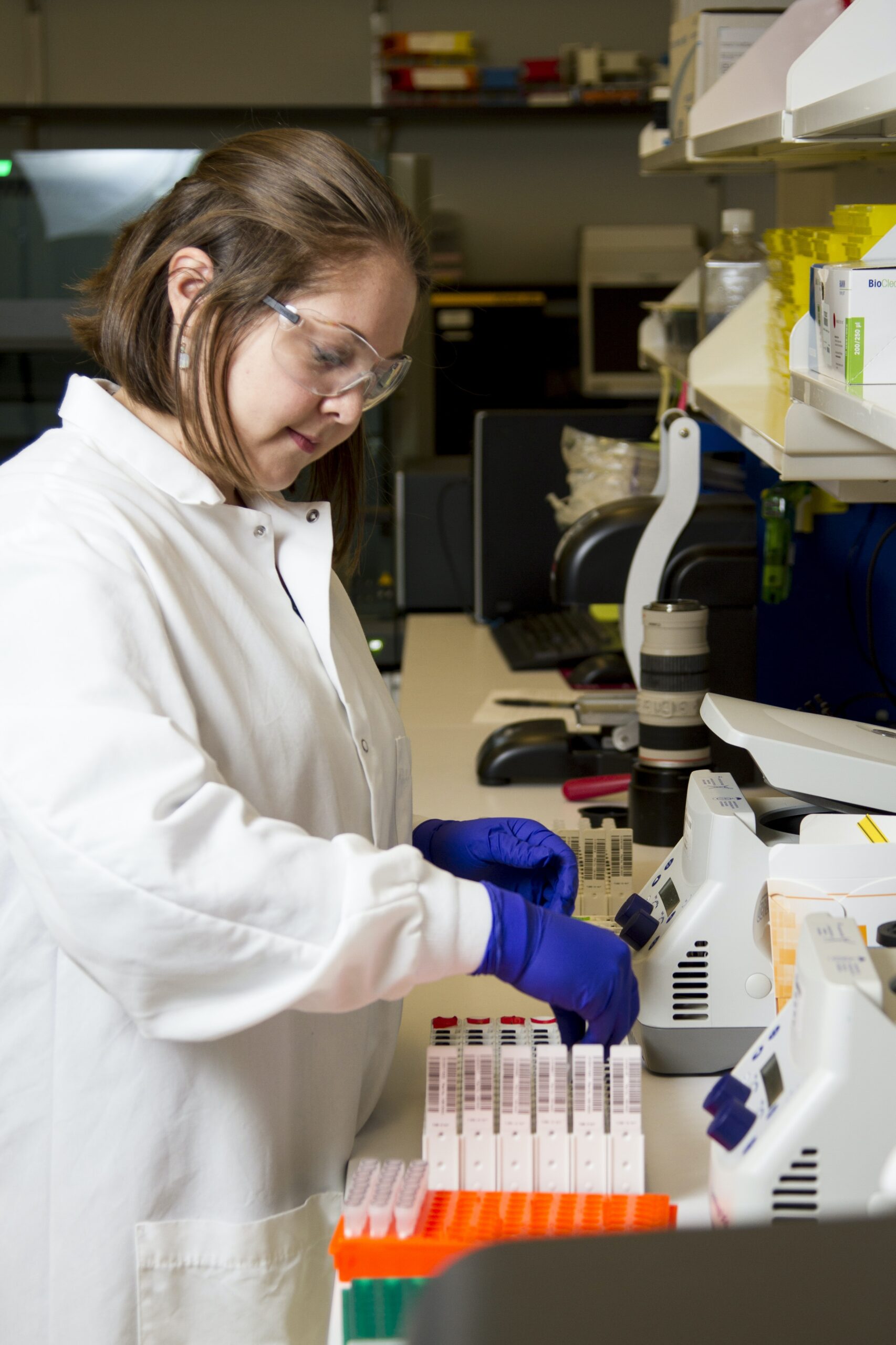Prostate cancer is a prevalent concern for many individuals, but have you ever wondered just how common this condition actually is? In this article, we will explore the frequency of prostate cancer cases globally, providing you with valuable insights and a clearer understanding of this widespread health issue. From statistics to risk factors, we will shed light on the prevalence of prostate cancer, empowering you with knowledge that can aid in prevention, early detection, and overall health management. So, let's embark on this informative journey together and discover just how common prostate cancer truly is.
Understanding Prostate Cancer
Definition and overview of prostate cancer
Prostate cancer is a type of cancer that develops in the prostate gland, a small walnut-shaped organ located just below the bladder in males. The prostate gland is an essential part of the male reproductive system, producing and storing seminal fluid which nourishes and protects sperm.
Prostate cancer occurs when the cells in the prostate gland start to grow uncontrollably, forming tumors. These tumors may remain localized, confined within the prostate gland, or spread to other parts of the body, such as the bones.
Role and function of the prostate gland
The prostate gland plays a crucial role in the male reproductive system. Its main function is to produce seminal fluid, which combines with sperm from the testicles to form semen. The muscles of the prostate gland also help propel semen during ejaculation.
Additionally, the prostate gland produces a protein called prostate-specific antigen (PSA), which helps to liquefy semen. PSA levels can be used as a screening tool for prostate cancer.
Prevalence of Prostate Cancer
Global statistics on prostate cancer
Prostate cancer is one of the most common forms of cancer among men worldwide. According to the World Health Organization (WHO), it is estimated that there were approximately 1.4 million new cases of prostate cancer in 2020. This accounts for around 7.3% of all new cancer cases globally.
Prostate cancer rates in different countries
Prostate cancer rates vary significantly across different countries. In general, it is more prevalent in Western countries, such as the United States, Canada, and Western Europe. These countries have higher rates of prostate cancer due to various factors, including lifestyle choices, genetics, and access to healthcare.

Prostate Cancer in the United States
Number of new cases annually
Prostate cancer is the most common form of cancer among men in the United States, excluding skin cancer. According to the American Cancer Society, it is estimated that in 2021, there will be approximately 248,530 new cases of prostate cancer. This represents around 26% of all new cancer cases in men.
Comparison of prostate cancer rates by state
Prostate cancer rates within the United States vary considerably by state. Factors such as age, race, and access to healthcare contribute to these differences. States with higher rates of prostate cancer include Alaska, Delaware, and Louisiana. Conversely, states with lower rates include Hawaii, Arizona, and New Mexico.
Risk Factors for Prostate Cancer
Age and prostate cancer
Age is the most significant risk factor for developing prostate cancer. The risk of developing prostate cancer increases significantly after the age of 50, and the majority of cases occur in men over the age of 65. It is uncommon for men under the age of 40 to develop prostate cancer.
Genetic factors
Family history and genetics also play a role in prostate cancer risk. Men with a family history of prostate cancer, particularly if a close relative such as a father or brother has been diagnosed, have a higher risk of developing the disease themselves.
Certain gene mutations, such as mutations in the BRCA1 or BRCA2 genes, also increase the risk of developing prostate cancer. These mutations are more commonly associated with breast and ovarian cancer in women but can also affect men.
Lifestyle and environmental factors
While genetics and age are non-modifiable risk factors, certain lifestyle and environmental factors may increase the risk of developing prostate cancer. High-fat diets, especially those rich in saturated fats, are linked to an increased risk. Conversely, diets rich in fruits, vegetables, and whole grains have been associated with a reduced risk.
Exposure to certain environmental toxins, such as Agent Orange, a defoliant used during the Vietnam War, has also been linked to an increased risk of prostate cancer. However, the overall impact of environmental factors on prostate cancer risk is not yet fully understood.
Symptoms and Diagnosis of Prostate Cancer
Common symptoms
In the early stages, prostate cancer may not cause any noticeable symptoms. As the disease progresses, however, some common symptoms may manifest. These can include frequent urination, especially at night, difficulty starting or stopping urination, weak urine flow, blood in the urine or semen, pain or discomfort in the pelvic area, and erectile dysfunction.
Diagnostic methods
Prostate cancer diagnosis typically involves a combination of medical history evaluation, physical examination, and various diagnostic tests. The two primary tests used for prostate cancer detection are the prostate-specific antigen (PSA) test and the digital rectal exam (DRE).
The PSA test measures the levels of PSA in the blood. High PSA levels can indicate the presence of prostate cancer, but it is important to note that elevated PSA levels can also be caused by other conditions, such as an enlarged prostate or inflammation.
The DRE involves a doctor or healthcare provider inserting a gloved, lubricated finger into the rectum to examine the prostate gland for any abnormalities in size, shape, or texture.
If the results of the PSA test or DRE are concerning, further diagnostic tests, such as a prostate biopsy or imaging studies, may be recommended to confirm the presence of prostate cancer.
Stages of Prostate Cancer
Explanation of the different stages
Once a diagnosis of prostate cancer is confirmed, it is important to determine the stage of the disease. The stage refers to the extent or spread of cancer within the body. The stages of prostate cancer range from I to IV and can be further divided into subcategories.
Stage I prostate cancer is localized, meaning it is contained within the prostate gland and has not spread to other tissues or organs. Stage II prostate cancer may still be localized but may involve a larger portion of the prostate gland. Stage III prostate cancer has started to spread beyond the prostate gland to nearby tissues, such as the seminal vesicles. In Stage IV prostate cancer, the cancer has spread to distant lymph nodes, bones, or other organs.
Prognosis and survival rate for each stage
The prognosis and survival rates for prostate cancer vary depending on the stage at diagnosis. Generally, the earlier the stage, the better the prognosis. For localized prostate cancer (Stages I and II), the 5-year survival rate is nearly 100%. However, for more advanced stages (III and IV), the 5-year survival rates range from approximately 30% to 90%, depending on the extent of spread and other factors.
The treatment approach for each stage will vary based on the individual's overall health, age, and preferences. It is important to consult with healthcare professionals to determine the most appropriate treatment plan.

Treatment of Prostate Cancer
Common medical treatments
The treatment of prostate cancer depends on various factors, including the stage and aggressiveness of the cancer, the patient's overall health, and personal preferences. Common medical treatments for prostate cancer include surgery, radiation therapy, hormone therapy, chemotherapy, and immunotherapy.
Surgery, typically in the form of a prostatectomy, involves removing the entire prostate gland and surrounding tissues. Radiation therapy uses high-energy beams to target and kill cancer cells. Hormone therapy aims to lower the levels of testosterone or other androgens, which are known to stimulate the growth of prostate cancer cells. Chemotherapy and immunotherapy are typically reserved for advanced or metastatic prostate cancer.
Alternative therapies and lifestyle changes
In addition to conventional medical treatments, some men may choose to explore alternative therapies or make lifestyle changes to manage prostate cancer. These can include dietary modifications, such as consuming a healthy and balanced diet rich in fruits, vegetables, whole grains, and lean proteins.
Regular exercise, such as walking, swimming, or cycling, can also contribute to overall health and well-being. Complementary therapies, such as acupuncture, massage, or relaxation techniques, may help alleviate symptoms or side effects of treatment. It is important to consult with healthcare professionals before incorporating alternative therapies into a treatment plan.
Prostate Cancer Screening
Benefits and controversies of screening
Prostate cancer screening aims to detect the disease in its early stages, even before symptoms develop. The main benefit of screening is the potential to identify prostate cancer at a more treatable stage, improving the chances of successful treatment and survival.
However, there are ongoing debates and controversies surrounding prostate cancer screening. Some experts argue that widespread screening may lead to overdiagnosis and overtreatment of indolent, slow-growing cancers that may not pose a significant health risk. Others emphasize the importance of informed decision-making and individualized screening based on risk factors and patient preferences.
Screening methods – PSA and DRE tests
The two main screening tests for prostate cancer are the prostate-specific antigen (PSA) test and the digital rectal exam (DRE). The PSA test measures the levels of PSA, a protein produced by the prostate gland, in the blood. Elevated PSA levels can be an indication of prostate cancer, but they can also result from other conditions, such as an enlarged prostate or inflammation.
The DRE involves a doctor or healthcare provider manually examining the prostate gland for abnormalities by inserting a gloved, lubricated finger into the rectum. The DRE can help detect any noticeable changes in the shape, texture, or size of the prostate gland.
It is important to discuss the benefits, limitations, and potential risks of prostate cancer screening with healthcare professionals to make informed decisions about whether to undergo screening and at what frequency.
Living with Prostate Cancer
Effects of prostate cancer on daily life
A diagnosis of prostate cancer can have significant physical, emotional, and social impacts on individuals and their families. The physical effects can range from side effects of treatment, such as incontinence or erectile dysfunction, to fatigue and changes in body image.
Emotionally, prostate cancer diagnosis and treatment can lead to feelings of anxiety, fear, or depression. Coping with the psychological aspects of the disease is crucial, and support systems, including healthcare professionals, counselors, or support groups, can play a vital role in providing emotional support.
Support systems and coping strategies
Building a support system is essential for individuals living with prostate cancer. This can involve family members, friends, support groups, or online communities where one can connect with others who share similar experiences. These support systems can provide a sense of belonging, encouragement, and access to valuable resources.
Coping strategies, such as maintaining open communication with healthcare providers, practicing self-care, and seeking professional help if needed, can also contribute to managing the challenges of living with prostate cancer. Each individual's journey is unique, and finding the most effective coping strategies may require some adjustment and experimentation.
Prevention of Prostate Cancer
Diet, exercise, and lifestyle changes
While there is no guaranteed way to prevent prostate cancer, adopting a healthy lifestyle may potentially reduce the risk of developing the disease. Dietary choices can play a role, such as limiting the consumption of high-fat foods and incorporating more fruits, vegetables, and whole grains into the diet.
Regular physical activity, such as engaging in moderate-intensity exercises for at least 150 minutes per week, has also been associated with a lower risk of developing prostate cancer. Maintaining a healthy weight and avoiding tobacco use are additional lifestyle choices that can contribute to overall well-being and potentially reduce the risk of prostate cancer.
Prostate cancer vaccines
Research is ongoing to develop vaccines to prevent or reduce the risk of prostate cancer. Currently, there is no FDA-approved vaccine specifically for prostate cancer prevention. However, several clinical trials are investigating different vaccine approaches, such as therapeutic vaccines and preventive vaccines. These vaccines aim to stimulate the immune system to recognize and target prostate cancer cells.
It is important to note that, at present, vaccination against prostate cancer is not yet a standard preventive measure. Healthcare professionals can provide the most up-to-date information on clinical trials and the potential benefits of vaccination for individuals at high risk of developing prostate cancer.
In conclusion, understanding prostate cancer involves recognizing its definition, prevalence, risk factors, symptoms, diagnosis, stages, treatment options, screening, and the importance of support and prevention. By proactively educating ourselves and promoting awareness, we can work towards earlier detection, improved treatment outcomes, and enhanced support for those affected by prostate cancer.


